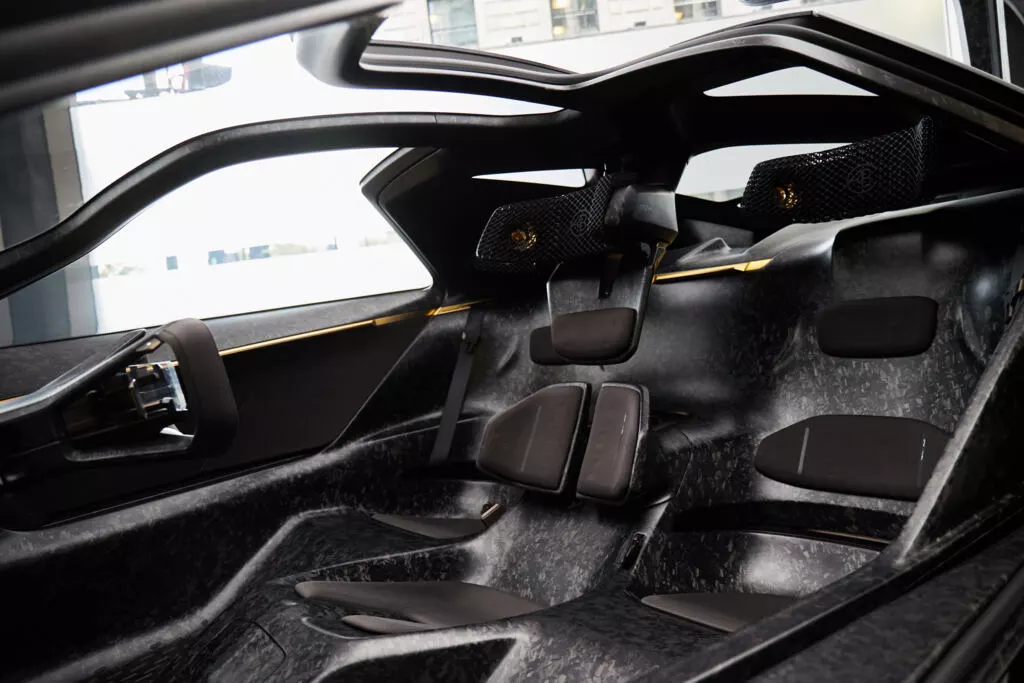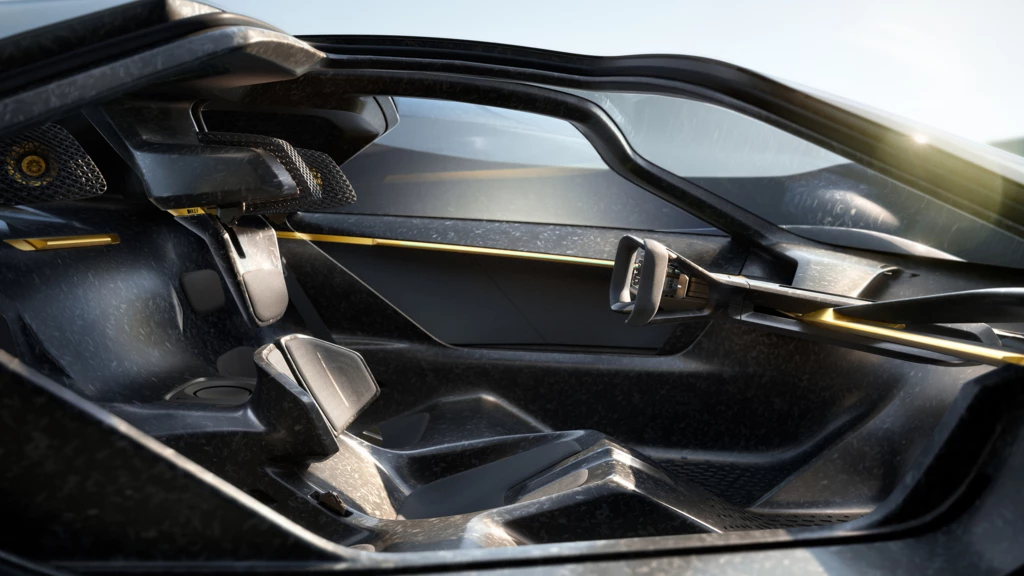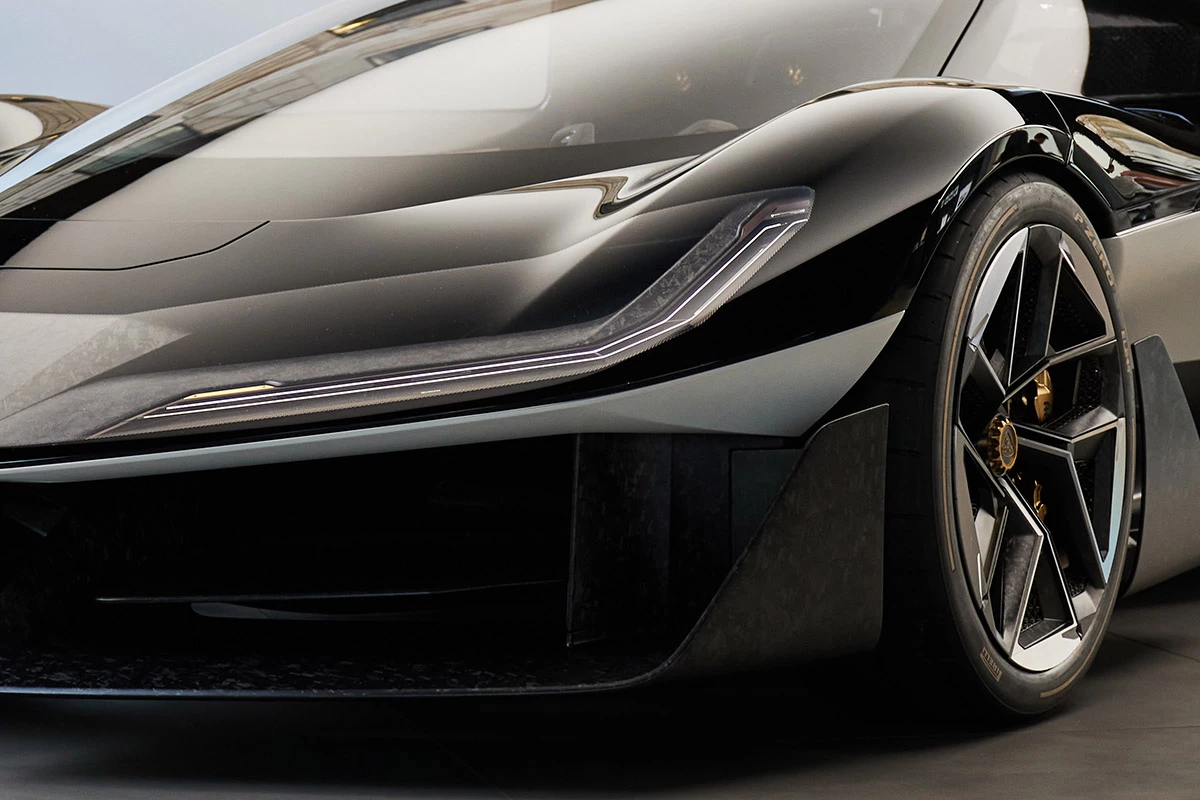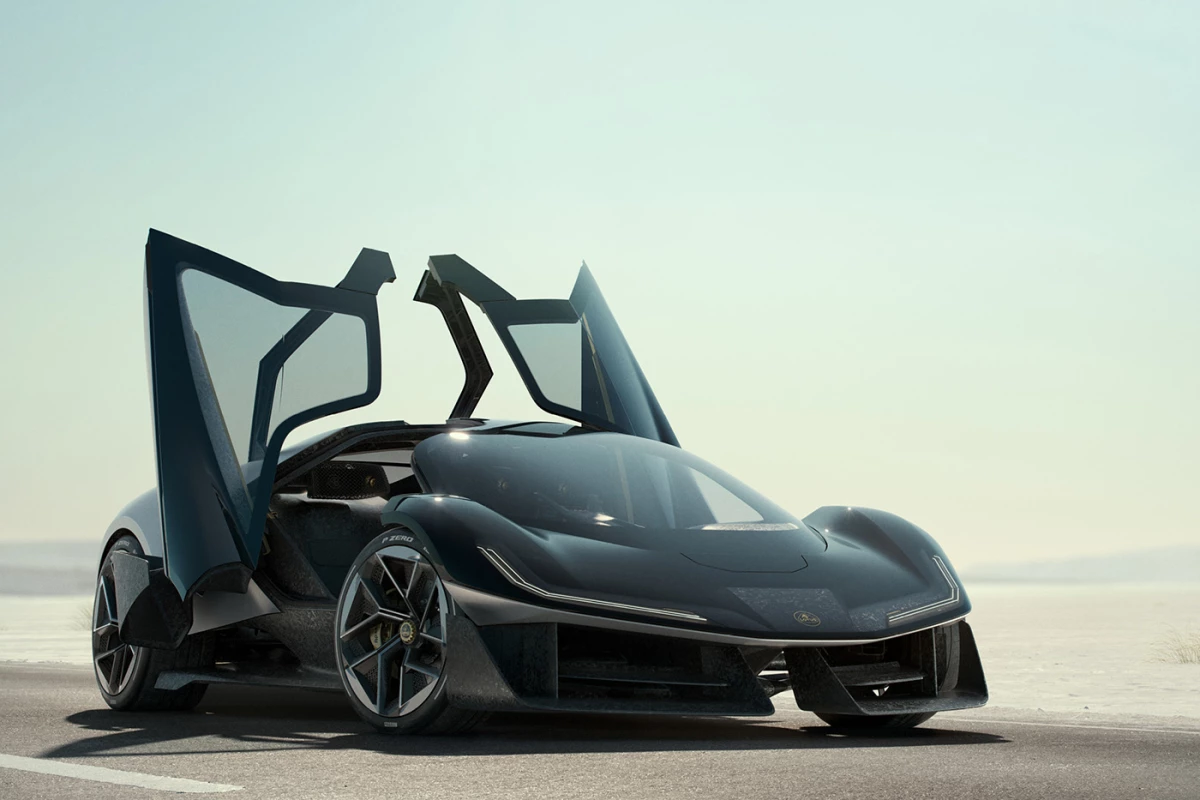Lotus has a lot to say about its breathtaking new Theory 1 concept car. It "embodies the future of intelligent performance vehicles," and its design encapsulates "three core principles – Digital, Natural, and Analogue (DNA)."
Honestly, the Theory 1 doesn't need any of that spiel to sell me on it. But the company insists this is not just marketing speak. Instead, it's meant to represent the direction of stylistic evolution for Lotus' upcoming performance cars, and we should expect to see these principles come together in future vehicles from the British marque.
Design and materials
The minimalist three-seater EV looks striking from every angle, especially when the doors scissor upwards and backwards to let you in. The low and wide stance, sharp body lines, and Lotus F1-inspired nose make it hard to look away.

Lotus took it upon itself to construct the Theory 1 from just 10 main A-surface materials with performance, durability, low weight, and sustainability in mind. That's why it's mostly made from recycled materials, including chopped carbon fiber, glazing, glass, polyester, rubber, and aluminum. Between those and other carefully selected materials, the Theory 1 weighs in at under 3,527 lb (1,600 kg).
The pared back cabin architecture is designed around a central driving seat, with two passenger seats on either side. Their cushioning is simply embedded into the formed chopped carbon fiber interior, as opposed to separated manufactured seats you'd slot into position.

Matthew Hill, head of interior design at Lotus, explained the idea was to craft a cabin that doesn't demand your attention. He added that it also incorporates the company's years of experience of "numerically what delivers a good driving position and a good distribution of information."
To that end, there's a compact yoke attached to a telescopic steering column with a small display in the center. Environmental lighting, dashboard-mounted laser lights, and reflections on the windscreen communicate information to the driver, such as warnings and upcoming turns.

Technology
There's a lot of cool tech to be found in and on the Theory 1. The first thing you'll notice are those daytime running lights (DRL) gracing the headlights – they're actually ultra-light laser wires less than a millimeter in diameter.
Inside, you'll find soft robotic textiles for the seats and steering wheel developed in partnership with MotorSkins. Their embedded bladders inflate, vibrate, and pulse against your body to subtly deliver info like blind spot warnings, and incoming message alerts.

The steering-mounted display features rather simply presented key data with minimal fonts and graphics. Subtle 3D graphics appear and mimic your speed, braking, turning, and engaged drive mode. And that's basically it. The idea is to help you keep your eyes on the road and your focus purely on driving.

Driving and performance
According to its spec sheet – which can be viewed as a piece of speculative fiction when you're looking at concept cars – the Theory 1 will get an all-wheel-drive (AWD) drivetrain to put down an enormous 986 hp (1,000 ps), and top out at 200 mph (320 km/h).
What we can see for real though, is a bunch of aerodynamic design elements to help the car go that fast. There's a diffuser and air deflectors on the front fascia to reduce drag, along with side pods to direct air past the doors and through ducts towards the rear.

The car also gets a large rear wing mounted directly to the motor and suspension assembly. Lotus says this causes the downforce generated at high speeds to act directly on the suspension mounts and reduce frontal lift.
A sign of things to come
With a wide array of brands producing compelling performance EVs today, it's not going to be easy for Lotus to grab a large slice of the market doing what it's done before. As is evidenced by the Theory 1, the company is betting big on design to make that happen.
According to Ben Payne, vice president of design at Lotus Group, the point of this concept is to show where the brand's design thinking is heading. He also says various elements from the Theory 1 will likely make an appearance in future models, as the scale of production and costs make sense. Those laser DRLs are a prime example.

Lotus already has plans to go all-electric by 2028; with thoughtful innovation and a focus on the driving experience, it could claw back a share of the performance vehicle market in the next few years.
Source: Lotus Cars







